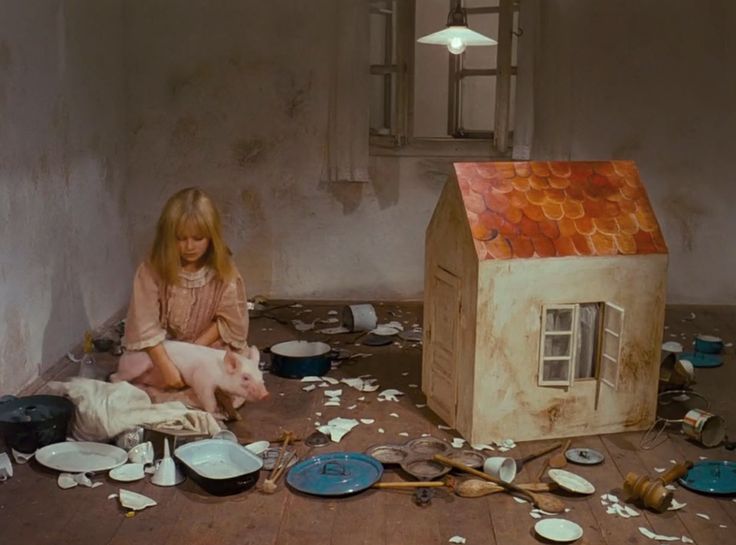He has always been one of my favorite directors. I am deeply fascinated by his narrative style in his works. When creators delve into social issues, philosophy, or human nature, it often feels heavy for the audience. However, he expresses these topics in a more relaxed manner through stop-motion animation, highlighting the overall theme of the animation. This is one of the reasons why I admire him the most.
The work maintains his consistent visual style, featuring surreal stop-motion animation with a significant use of symbolism. The color tones and atmosphere of the scenes bear similarities to his other work, “Alice.” Indeed, this piece references Lewis Carroll’s “Jabberwocky,” a nonsensical poem filled with words created by the author. In Jan Svankmajer’s film, these “nonsense words,” presented as voiceover narration and read by a young girl, provide the audience with an intuitive sense of the theme of “childhood.”But “Alice” was created in 1988.So I think, it was derived from “Jabberwocky.”

The short film contains several very distinct symbols, such as the red apple tree, which reminds me of the story of Adam and Eve in the Garden of Eden. The red apple symbolizes desire, but I’m not sure if it corresponds to the opening scene of spanking. I wonder if it’s a sexual innuendo.
The second symbol is the black cat and the maze, which appear a total of four times in the short film. I think the “maze” symbolizes the journey of growing up, representing a path that is winding but exploratory in nature. In Czech culture, the black cat tends to have negative connotations, symbolizing misfortune. Therefore, I think the black cat and the maze represent the darker aspects that children encounter during their process of growing up.
I think this film portrays a distressing yet profoundly innocent childhood, reminding me of a book called “Lord of the Flies,” which also illustrates the inherent evil in children, a kind of evil that is innate. Moreover, what I see here is a reflection of patriarchal society under doctrinaire conditions. The men’s figures in the film seem to epitomize the patriarchal society, gazing at the clothing symbols of children. The notion of how boys and girls should be is dictated, without allowing them to decide for themselves. Similar themes are also present in “Alice’s Adventures in Wonderland,” depicting the confusion and rebellion under authority.
Although its visuals are not particularly “refined,” every prop, every symbol, and every movement vividly portray the discipline and education children undergo while growing up. I think this film have a typical”Jan Svankmajer” style, very distinctive. Having learned about the director’s background, I sensed the vitality emanating from the creators under strict political censorship. Considering the similar challenges faced by China’s current censorship system, this is one of the reasons why I appreciate this work.